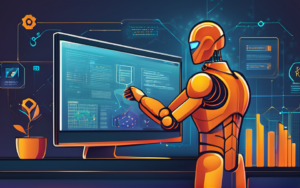The digital world is constantly evolving, and with it, the landscape of cyber threats is becoming increasingly complex and sophisticated. From the rise of artificial intelligence (AI) to the interconnectedness of our devices, we’re facing a new era of cyberattacks that demand a proactive and comprehensive approach to cybersecurity. This post explores the future of cyber threats, key trends shaping the cybersecurity landscape, and practical strategies for organizations and individuals to prepare for the challenges ahead.
The Evolving Landscape of Cyber Threats
The nature of cyber threats is constantly evolving, becoming more sophisticated and targeted. Here are some key trends that are shaping the future of cyberattacks:
The Rise of Sophisticated Attacks
Cybercriminals are increasingly employing advanced techniques like zero-day exploits, ransomware, and phishing attacks to bypass traditional security measures. These attacks are often highly targeted and tailored to specific organizations or individuals, making them harder to detect and defend against.
The Growing Threat of AI-Powered Attacks
Artificial intelligence (AI) is rapidly transforming the cybersecurity landscape, both for defenders and attackers. AI-powered attacks can automate malicious activities, making them more efficient and effective. These attacks can target vulnerabilities in systems that are difficult for humans to detect.
The Impact of Emerging Technologies
Emerging technologies like the Internet of Things (IoT), 5G, and cloud computing are creating new attack surfaces and vulnerabilities. These technologies are connecting devices and systems in unprecedented ways, creating interconnected networks that can be exploited by attackers.
Key Trends Shaping the Future of Cybersecurity
As the nature of cyber threats evolves, so too must our approach to cybersecurity. Here are some key trends that are shaping the future of cybersecurity:
The Convergence of Physical and Digital Security
The lines between the physical and digital worlds are blurring as we become increasingly reliant on connected devices. This convergence is creating new opportunities for cyberattacks that can impact both physical and digital assets.
The Importance of Data Privacy and Security
Data is becoming increasingly valuable in today’s digital economy, making it a prime target for cyberattacks. Organizations must prioritize data privacy and security, implementing robust measures to protect sensitive information from unauthorized access.
The Rise of Cybersecurity as a Business Imperative
Cybersecurity is no longer just an IT issue; it’s becoming a business imperative. Organizations are recognizing the importance of cybersecurity in protecting their reputation, brand, and bottom line.
Preparing for the Future: Strategies for Organizations
Organizations must take a proactive approach to cybersecurity to effectively mitigate the risks of future cyberattacks. Here are some key strategies for preparing for the future:
Investing in Advanced Security Technologies
Organizations should invest in advanced security technologies like next-generation firewalls, intrusion detection and prevention systems, and security information and event management (SIEM) solutions. These technologies can help detect and respond to threats in real-time.
Building a Strong Cybersecurity Culture
A strong cybersecurity culture is essential for protecting organizations from cyberattacks. This involves educating employees about cybersecurity best practices, promoting a culture of awareness and vigilance, and implementing clear policies and procedures.
Developing a Comprehensive Incident Response Plan
Organizations should develop a comprehensive incident response plan that outlines the steps to be taken in the event of a cyberattack. This plan should include procedures for identifying, containing, and recovering from an incident.
The Role of Individuals in Cybersecurity
Individuals also have a role to play in protecting themselves and their organizations from cyber threats. Here are some steps individuals can take to enhance their cybersecurity:
Practicing Good Cybersecurity Hygiene
Individuals should practice good cybersecurity hygiene by using strong passwords, keeping software updated, being wary of phishing emails, and avoiding suspicious links.
Staying Informed About Emerging Threats
It’s crucial to stay informed about emerging cyber threats and best practices for protecting against them. This can be achieved through subscribing to cybersecurity newsletters, following reputable security blogs, and attending industry events.
Advocating for Stronger Cybersecurity Measures
Individuals can advocate for stronger cybersecurity measures by supporting organizations and initiatives that promote cybersecurity awareness and education.
A Collaborative Approach to Cybersecurity
Addressing the challenges of future cyber threats requires a collaborative approach.
The Importance of Public-Private Partnerships
Stronger collaboration between government agencies, businesses, and research institutions is crucial for developing effective cybersecurity solutions. This includes sharing information, best practices, and resources to combat cybercrime.
The Need for Continuous Learning and Adaptation
The cybersecurity landscape is constantly evolving, so it’s essential for organizations and individuals to continuously learn and adapt to new threats. This includes staying updated on the latest cybersecurity trends, technologies, and best practices.
A Shared Responsibility for a Secure Digital Future
Cybersecurity is a shared responsibility, and everyone has a role to play in creating a secure digital future. By working together, we can build a more resilient and secure online world.




